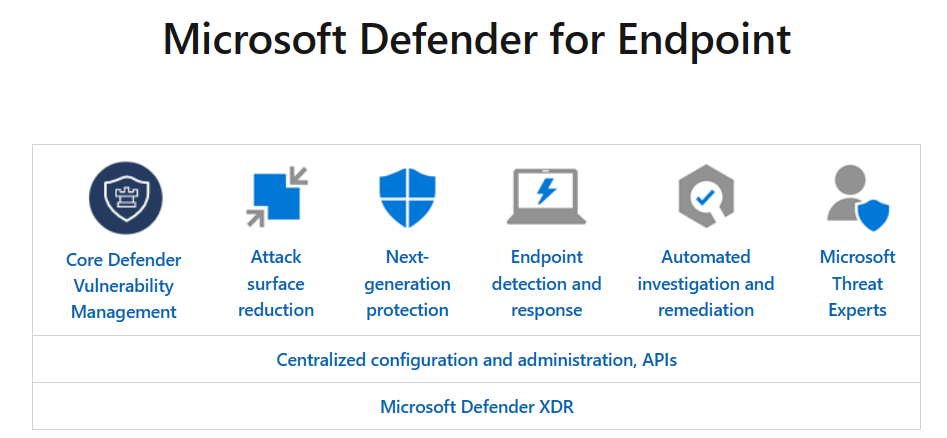Describe Microsoft Defender for Endpoint
Microsoft Defender for Endpoint is a platform designed to help enterprise networks protect endpoints including laptops, phones, tablets, PCs, access points, routers, and firewalls. It does so by preventing, detecting, investigating, and responding to advanced threats. Microsoft Defender for Endpoint embeds technology built into Windows 10 and beyond, and Microsoft cloud services. This technology includes:
- Endpoint behavioral sensors that are embedded in Windows 10 and beyond that collect and process signals from the operating system.
- Cloud security analytics that translate behavioral signals into insights, detections, and recommended responses to advanced threats.
- Threat intelligence that enables Defender for Endpoint to identify attacker tools, techniques, and procedures, and generate alerts when they're observed in collected sensor data.
Microsoft Defender for Endpoint includes:
- Core Defender Vulnerability Management: Built-in core vulnerability management capabilities use a risk-based approach to the discovery, assessment, prioritization, and remediation of endpoint vulnerabilities and misconfigurations.
- Attack surface reduction: The attack surface reduction set of capabilities provides the first line of defense in the stack. By ensuring configuration settings are properly set and exploit mitigation techniques are applied, the capabilities resist attacks and exploitation. This set of capabilities also includes network protection and web protection, which regulate access to malicious IP addresses, domains, and URLs.
- Next generation protection: Next-generation protection was designed to catch all types of emerging threats. In addition to Microsoft Defender Antivirus, your next-generation protection services include the following capabilities:
- Behavior-based, heuristic, and real-time antivirus protection.
- Cloud-delivered protection, which includes near-instant detection and blocking of new and emerging threats.
- Dedicated protection and product updates, which include updates related to keeping Microsoft Defender Antivirus up to date.
- Endpoint detection and response: Provides advanced attack detections that are near real time and actionable. Security analysts can prioritize alerts, see the full scope of a breach, and take response actions to remediate threats.
- Automated investigation and remediation (AIR): The technology in automated investigation uses various inspection algorithms and is based on processes that are used by security analysts. AIR capabilities are designed to examine alerts and take immediate action to resolve breaches. AIR capabilities significantly reduce alert volume, allowing security operations to focus on more sophisticated threats and other high-value initiatives.
- Microsoft Secure Score for Devices: Microsoft Secure Score for Devices helps you dynamically assess the security state of your enterprise network, identify unprotected systems, and take recommended actions to improve the overall security of your organization.
- Microsoft Threat Experts: Microsoft Threat Experts is a managed threat hunting service that provides proactive hunting, prioritization, and additional context and insights that further empower Security operation centers (SOCs) to identify and respond to threats quickly and accurately.
- Management and APIs: Defender for Endpoint offers an API model designed to expose entities and capabilities through a standard Microsoft Entra ID-based authentication and authorization model.
Microsoft Defender for Endpoint also integrates with various components in the Microsoft Defender suite, and with other Microsoft solutions including Intune and Microsoft Defender for Cloud.
Microsoft Defender for Endpoint is available in two plans, Defender for Endpoint Plan 1 and Plan 2. Information on what's included in each plan is detailed in the Compare Microsoft Defender for Endpoint plans document linked in the summary and resources unit.
